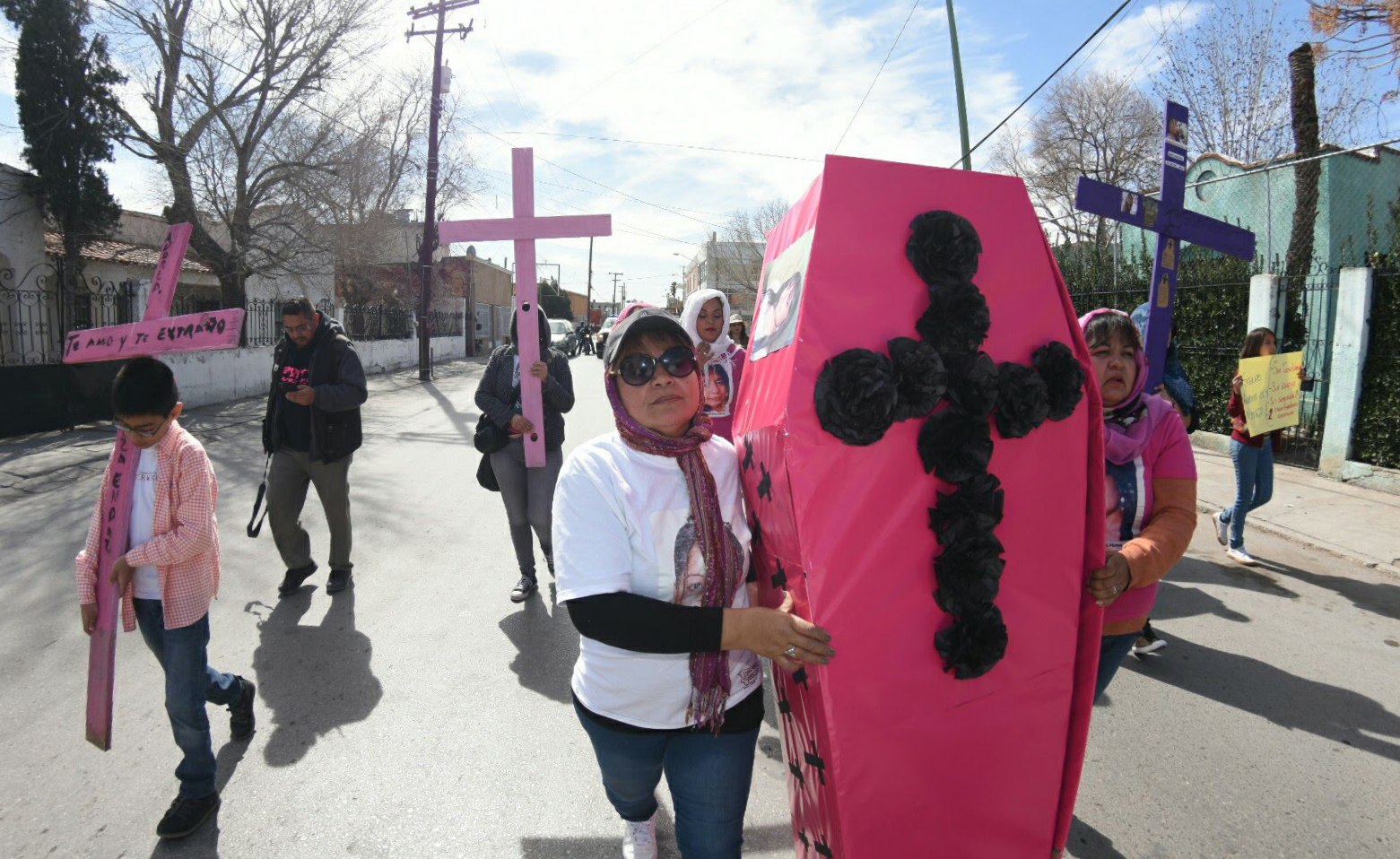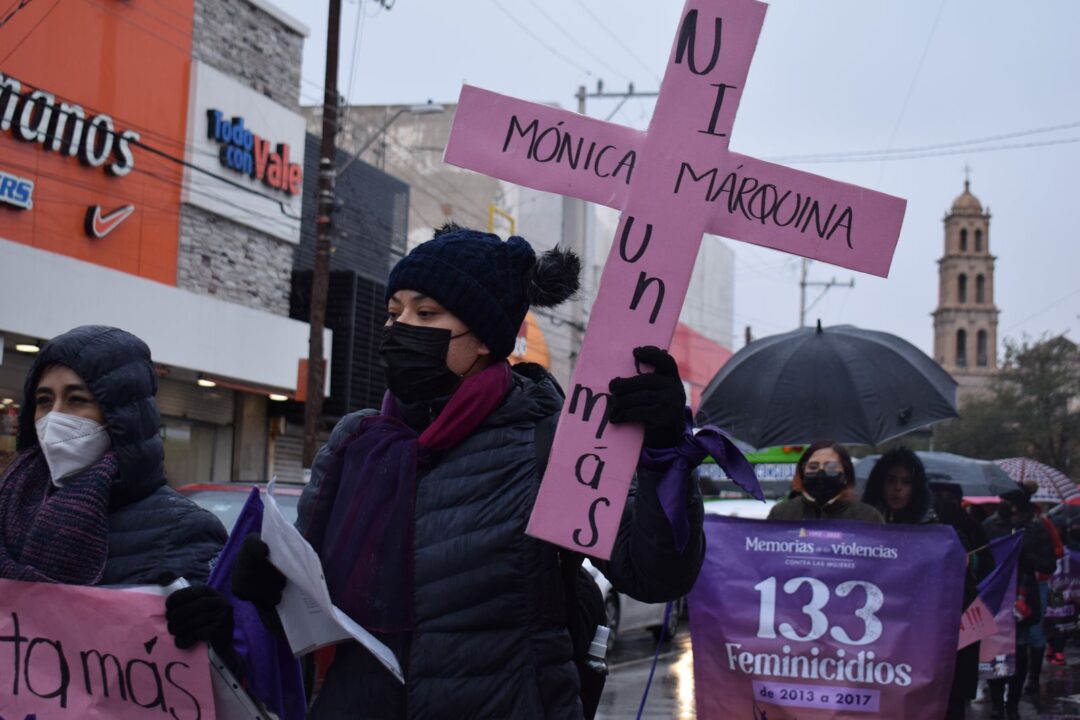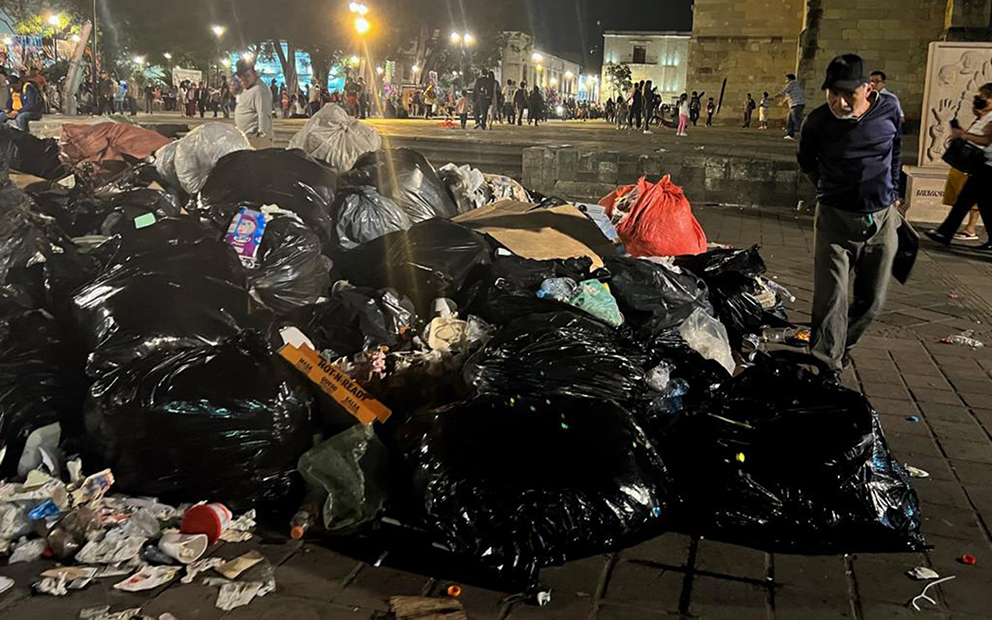Violence against women in Ciudad Juárez has gotten worse during the pandemic, the issue is considered the “Achilles heel” of public policy in Chihuahua.
Text: Blanca Elizabeth Carmona, originally published May 2, 2021.
Photo: REY R. JAUREGUI, from the LA VERDAD archive.
Translation: Dawn Marie Paley.
Ciudad Juárez, Mexico–Between the night of April 22 and the first hours of the next day, Emma Alejandra was killed inside a house in the Linda Vista neighbourhood, in the western part of the city. It wasn’t a stranger who killed her. Authorities are accusing her ex-partner.
According to information from the State Attorney General’s Office Specialized in Attention to Women who are Victims of Crime (FEM), Omar M. O. strangled her because she refused to take him back as an intimate partner. The victim’s body was left inside the house on Atenas street, near the Tepeyac cemetery.
In addition to Emma, nine other women were killed in April in Ciudad Juárez. In January 17 women were killed, another 14 in February and 17 in March. According to official numbers, 57 women were killed in the city during the first four months of 2021.
Last year, over the first four months of the year, 66 women were killed, according to journalistic reports based on official counts.
In Ciudad Juárez violence against women hasn’t slowed down, rather it is constant, and during the Covid-19 pandemic it has gotten worse, according to Lidia Cordero, executive director of Casa Amiga, an organization dedicated to providing psychological attention, legal assistance and social workers to people experiencing gender violence of any kind.

“At Casa Amiga we have registered an increase of at least 23 per cent in the services that we provide during the pandemic. We were giving telephone assistance for a while, but whenever we’re able to open, we receive women in person,” said Cordero.
Casa Amiga’s psychology program has documented not only that violence has increased, but that the aggressions that were already taking place have gotten worse.
Extreme violence has forced women to look for a safe place of refuge. The demand has been high enough that the three women’s shelters in Ciudad Juárez were overwhelmed.
“Apart from the fact that the demand went up by 23 percent, the number of requests from women seeking refuge also went up, these are women seeking shelter because they are facing extreme violence and risk being killed,” said Cordero. “Many of them were looking for shelter, and at one point we had to send them to another state because the shelters in the city were full, completely full.”
The shelter administered by Casa Amiga has the capacity for 18 families, which is to say, women together with their children; there is another shelter they can take between 12 and 15 families, and there is a third that is only open part of the time –when it has funding– which has even less space.
Cordero explained that pandemic related lockdowns mean that victims spend more time in private spaces with their aggressors, and without access to their support networks.
In the period between January and March 2021, there were 2,775 cases of domestic violence reported in the state of Chihuahua, which makes it the fifth highest in the country, after Mexico City, Mexico State, Nuevo León and Jalisco. In total, around the country, 59,313 investigations were opened for this crime over the same period, according to data from the Executive Secretary of the National System of Public Security.
This number represents around a 10 percent increase over the same period –January to March– last year, when 54,150 cases of domestic violence were reported.
Cordero explained that in many cases, domestic violence ends in a femicide.
Violence against women, “Achilles heel”
In Chihuahua state, the number of women who are victims of homicides has also increased. From January to March of this year, there were 75 women who were murdered, which puts Chihuahua second nationwide for the number of women killed, after only Baja California, where 99 women were killed over the same period. In all of México, 715 women died violently in the first trimester of the year, according to data from the Executive Secretariat of the National System of Public Security.
Of all the intentional homicides committed in the first three months of 2021, only eight cases were classified as femicides –when a woman is targeted and killed for being a woman– in Chihuahua, putting the state in 13th place. Over this period, 234 femicides occurred nationwide.
Ciudad Juarez comes in at number seven on the list of 100 municipalities with the most femicides in Mexico, at a rate of 0.41 such crimes for every 100,000 women, taking into account that there are 737,015 women living in the border city, according to government data.
Regardless of the cases and the registration of victims, femicide and its causes are an issue that continues to be made invisible, according to Imelda Marrufo, coordinator of the Red Mesa de Mujeres.
When a femicide is perpetrated in a domestic environment, there have already been other violent acts, according to Marrufo.
“There is continuous violence until the femicide is committed, and the crimes in the public sphere imply a lack of prevention,” she said. “But also, once those crimes have been committed, the investigations are always held back because there are too many cases open for all the other crimes committed, as well as for femicide.”
“The killing of women is the great Achilles heel of public policy,” she said.
As an example she cited the example of the current state government. Marrufo considers that with respect to investigations into homicides of women and femicides, the government of Governor Javier Corral has a lot to answer for.
For example, she explained that when the Juárez Valley Specialist Team was created, it was dedicated to investigating the victims found in the El Navajo river bed. But the group was never provided the trained staff or equipment it needed. There was an improvement in the training of the officials who worked in the FEM, but their institutional capacity wasn’t strengthened alongside the increase in reports of violence. Finally, a Special Gender Tribunal was created to increase access to justice, but there are not enough judges, and they only deal with domestic violence.
“The staffing increase in the FEM hasn’t kept pace since 2012, there are more and more complaints and not enough staff… There is more staff, but it’s not enough. If the number of complaints rises the number of staff should also increase, in relation to the number of open investigation files. One thing that they aren’t going to be able to do [before leaving office in June] is to open the new building, they won’t open the new building for the FEM with the minimum requirements to open to the public,” she said.
What do the candidates say?
Marrufo noted that the political campaigns are already underway, but until now she says she hasn’t seen any serious proposals regarding prevention and investigation of crimes against women.
“It’s a good time to remind them that there’s a whole issue not just in terms of prevention but also in terms of investigation. The big question I have for the candidates looking to govern Chihuahua is ‘what are you going to do about it’?”
“It’s an important issue, we have pointed to the importance of holistic policies in terms of prevention, punishment and investigation. One candidate promised pink patrol cars, but, like, what’s that for?” says Marrufo. “Another promised to create a Family Secretariat, which would be like the National System for Integral Family Development (DIF) but with more staff and more resources; while a congressional candidate promised to castrate rapists, when we know human rights law would never allow that.”
This report was originally Published in La Verdad, Periodismo de Investigación, which is part of the Media Alliance organized by Red de Periodistas de a Pie. You can read it here.
Click here to join Pie de Página’s bi-weekly English newsletter.
Ayúdanos a sostener un periodismo ético y responsable, que sirva para construir mejores sociedades. Patrocina una historia y forma parte de nuestra comunidad.
Dona


















